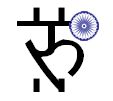This morning there was a joke in the newspaper about the Chinese overtaking the Americans. Chinese kids chuckling over having Americans working for them in 2030. “Why do great nations fail?”, the teacher asked. “It happens because they turn their back on the things that make them great.”
Non-violence, honesty and pride made India great. Today we seem to have lost all three. Our leaders see commonwealth games as a way to make a quick buck, our military is building personal houses worth millions on public land, but for a moment stop blaming them. Pause to think about a common man on the street and what example he is setting for his teenage kid. Is he teaching them these values? Are schools worried about making good humans, or are busy creating mark getting machines? Mr.Sibal this is what I would call a reform.
Are these values even relevant today? People will argue both ways and its getting harder by the day to hold ground on this value school of thought. I am convinced though that this is the only way to make India truly great. Each person needs to be his own watchdog. Not easy, but not impossible.
During independence a great role was played by our songwriters. That is another community that has lost its purpose. However, as I said let values begin at home then blame others.
Going back to our priceless scriptures will make it easier for us to achieve this. I want to end with this beautiful song:
http://www.youtube.com/watch?gl=US&client=mv-google&hl=en&v=3DUoUULuWNM





